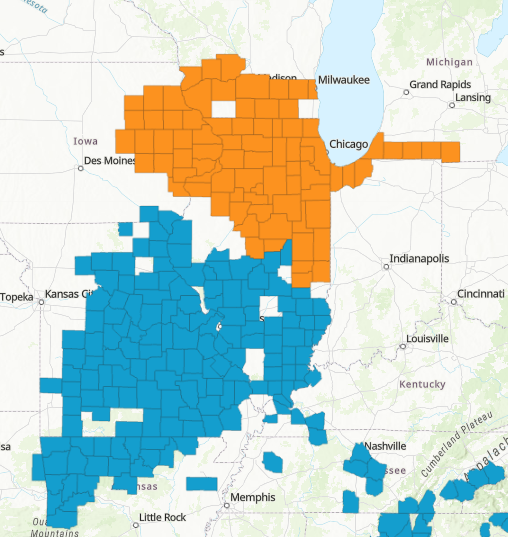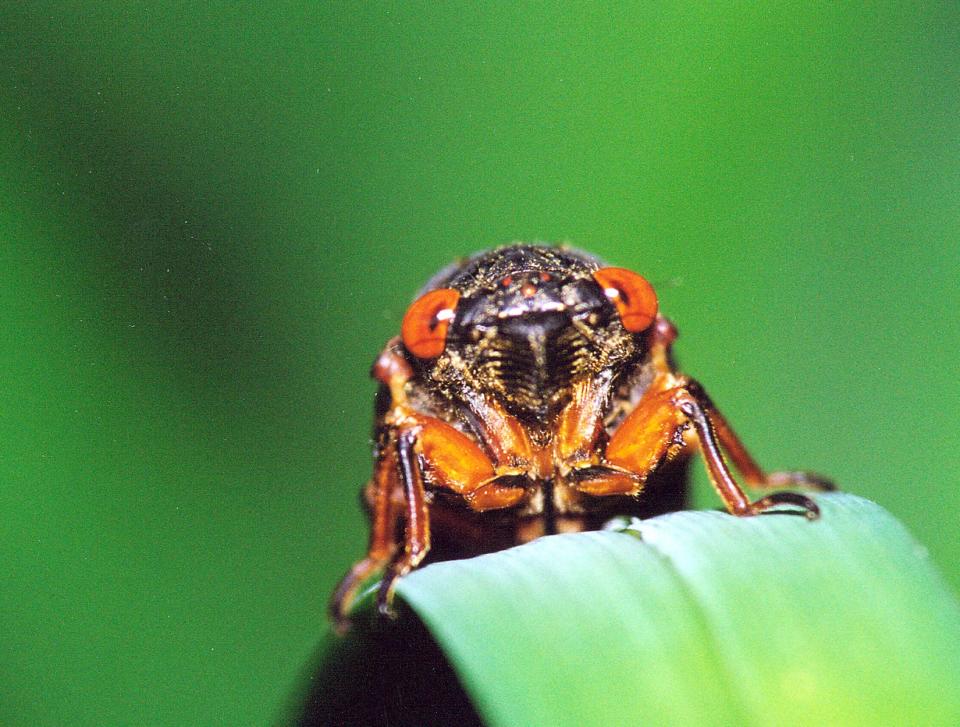Will loud, pervasive 13-year or 17-year cicadas emerge from the earth this year in Kansas?
A loud, pervasive type of cicada that emerges only once every 17 years will appear this year in far western Missouri, but apparently not in Kansas.
Cicadas from what is known as "Brood XIII" are projected to come up from the ground in an area extending as far east as Benton County, Missouri — which is adjacent to Crawford County in southeast Kansas — says a 2024 cicada map compiled using data from various federal agencies and published May 7 by USA Today.
But Brood XIII cicadas aren't expected to emerge in Kansas, which is anticipated to see "only the non-periodical cicadas we see every year," said Rodrigo Mercader, an assistant professor of biology at Washburn University.
"We will have to wait until 2032 to see periodical cicadas in Kansas when Brood IV emerges," Mercader told The Capital-Journal on Monday.
Brood IV cicadas also come up from their subterranean homes every 17 years, and last did so in Kansas in 2015, he said.

Why are people excited about periodical cicadas?
There are at least 15 cycles, or "broods," of periodical cicadas, some of which emerge every 17 years while others emerge every 13 years.
The red-eyed bugs with black bodies and translucent, orange-tinted wings stay above ground for a few weeks, mating and laying eggs, before they die. Their eggs then produce the next generation of cicadas.
Mercader said people are becoming excited about periodical cicadas this year for two main reasons:
• Numerous periodical cicadas from two different groups — Brood XIII, which emerges from the ground every 17 years and Brood XIX, which comes up every 13 years — are appearing this year. Though the geographic areas where those broods appear are adjacent, there is little overlap and only small areas of central Illinois are expected to see both broods. The two broods last emerged at the same time in 1803.
• Broad XIX periodical cicadas will be present in a large geographic area, appearing in "quite a few" states.

Where are periodical cicadas expected to appear this year?
Different broods of cicadas emerge in different parts of roughly the eastern half of the United States in different years. Other species of cicada show up every summer.
Cicadas have not been seen in the far West.
Many of this year's cicadas have already come up from the ground.
States anticipated to see periodical cicadas this year are Alabama, Arkansas, Georgia, Illinois, Indiana, Iowa, Kentucky, Louisiana, Michigan, Mississippi, Missouri, North Carolina, Oklahoma, South Carolina, Tennessee, Wisconsin and Virginia.
Contact Tim Hrenchir at threnchir@gannett.com or 785-213-5934.
This article originally appeared on Topeka Capital-Journal: Will Kansas be among states where periodical cicadas appear this year?

